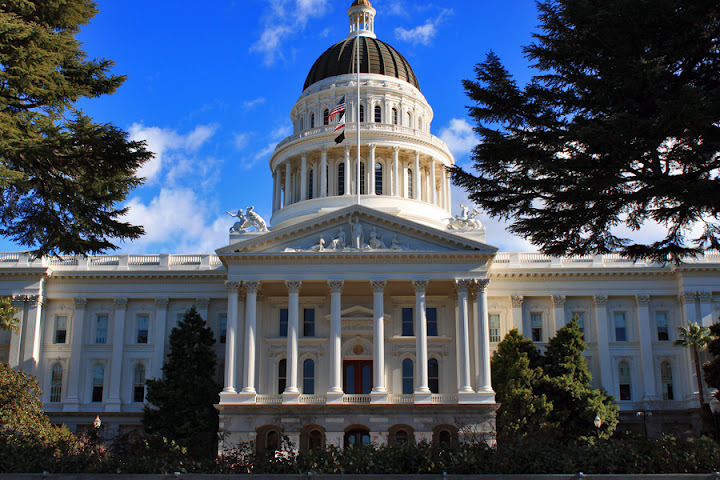By Loren Kaye.
In 2016 California voters considered more than 850 local ballot measures. But that is just too much democracy, according to a measure introduced in the Assembly last month.
Most local measures are placed on the ballot by a local governing board: city council, school board, transit district, etc. Most of those measures are charter amendments, tax increases or bond measures.
But occasionally citizens choose the path of direct democracy. For over a hundred years, city or county residents have drafted, collected signatures for, and ultimately placed on the ballot measures proposing to influence some aspect of the governance or character of their local communities.
Not so fast, say the sponsors of Assembly Bill 890.
In the name of environmental protection, this measure could bring to a halt most citizens’ initiative efforts at the local level. How do they engineer this audacious power grab?
- Require proponents to submit their initiative proposal to county planning officials.
- Require county planners “to determine if the activity proposed by the measure has the potential for resulting in either a direct physical change in the environment, or a reasonably foreseeable indirect physical change in the environment.”
- If planners determine that the measure could meet either of these conditions, then local officials notify the initiative proponent that “the proposed initiative cannot be adopted by the initiative process.”
- That’s it. Game over.
So here’s the question to the hapless county planner: Can you ensure that this proposal will not have an indirect physical effect on the environment? Can you prove a negative? Who in his right mind would answer “yes?” Especially since an affirmative answer would inevitably lead to litigation.
The bill does not limit review to any narrow category of proposals. All initiatives get their time in the dock.
- Want to impose a soda tax? Well, this might result in more consumption of bottled water, which means more extraction from California wells, which is a physical change in the environment.
- Want to impose a prohibition on unscheduled shift changes by local businesses? This might result in more workers commuting to their jobs than would otherwise be the case, which means potentially more automobile trips and the associated emissions.
The sponsors of AB 890 purport to limit the application of the initiative death penalty by requiring review only of “activities subject to the California Environmental Quality Act.” But that escape clause is really a dead end. Buried in the bill is a new amendment to CEQA, adding a definition of “project” to include “an activity that is proposed by a local initiative measure and, if passed or adopted, would be implemented by a public agency.”
Thanks for nothing.
Local initiatives are just like other public policy debates: some pass, others fail. Many measures from 2016 were important, intensely debated local issues. Some obviously would make a “direct physical change to the environment” while others are certainly close enough to meet the “indirect physical change” standard. No ballot for them. But even for those few that may have passed muster in the planning agency, their inherent controversy would inevitably have drawn litigation under CEQA, which would simply mean their demise would be slower and more painful.
- San Francisco voters approved Proposition Uby a two-to-one margin, increasing the income eligibility limit for affordable rental units, to slightly increase access to affordable housing in the state’s most expensive market.
- Voters in Los Angeles approved Measure JJJ, imposing minimum affordable housing requirements and locally-sourced labor for affordable housing projects.
- San Diego voters rejected Measure C, which would have increased the hotel tax to build a downtown football stadium. AB 890 would have prevented voters from even considering this measure, which brought the long countywide debate over the fate of the Chargers to finality.
- Voters approved Measure Lin Richmond establishing a rent control regime.
- Voters approved Measure Nin San Bernardino regulating marijuana dispensaries.
- San Jose voters approved Measure Eto give additional work hours to existing part-time employees before hiring new employees.
- Voters in Ventura approved Measure C, one of two competing initiatives addressing the county’sOpen Space, Agricultural and Rural General Plan.
No doubt I would have voted against many of the measures that passed had I lived in the city or county in question. But just because democracy doesn’t always provide the result one wishes doesn’t mean that democracy itself should be constrained.
Government by initiative can be messy, and the system itself can always be improved. Witness the consensus-based modernization of the state initiative process that culminated in then-Senate Leader Darrell Steinberg’s SB 1253 in 2014.
But sponsors of AB 890 propose the other path: the solution to voters who disagree with your preferred decision is to take the voters out of the decision process altogether. Nothing could be further from the California way.
[divider] [/divider]
Loren Kaye is the President of the California Foundation for Commerce and Education.





